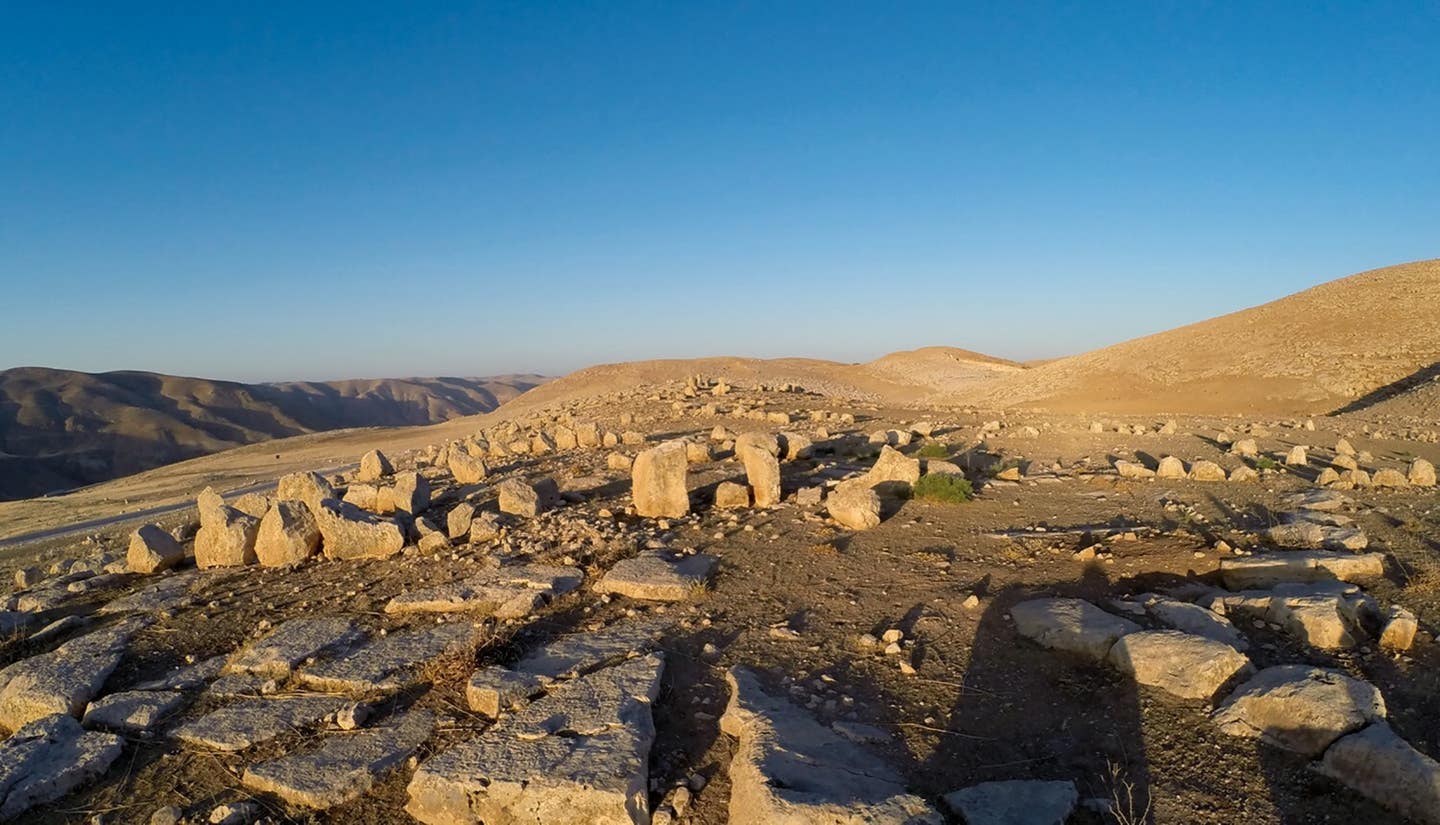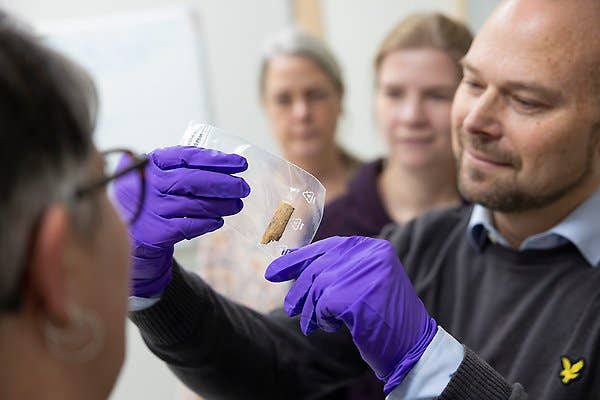Archaeologists discover 5,500-year-old site where communities came to celebrate and find unity
Archaeologists uncover a 5,000-year-old ritual site in Jordan showing how ancient people built unity in times of crisis.

Overview of central knoll (Area 1) from N, showing different lines of standing stones. (CREDIT: The Ritual Landscapes of Murayghat Project, Susanne Kerner)
Long before cities dotted the Middle East, people gathered in the hills of modern-day Jordan to build something very different from a settlement.
Archaeologists from the University of Copenhagen have excavated what they describe as a “ritual landscape” at Murayghat. The site is a large Early Bronze Age complex marked not by houses or hearths but by dolmens and standing stones. It also features rock-cut enclosures adorned with intricate carvings. Their research shows that over 5,000 years ago, societies came together here not to live—but to remember, honor, and come together in times of need.
A Landscape Built for Ceremony
When researchers began to chart Murayghat, they were struck with what wasn't there. No houses whatsoever. No ovens or grain storage pits. Instead, they found well over 95 dolmens—huge stone burial monuments—splayed across the hillside in view. Those dolmens group into clusters that may represent clan or family lines, some of which are set out to face a center mound topped with stone-built enclosures and rock-carved bedrock hollows.
The architecture constructs a picture of space for ceremony, not habitation. The outdoor dolmens were lacking roofs, subjecting ritual to the weather. Curved and straight stone enclosures surround what would have been ceremonial group spaces for offering, feasting, or memorialization at the summit. In the distance, the mound would have been seen rising above the horizon, indicating to travelers coming from every direction that something divine lay ahead.
Feasts, Offerings, and Shared Memory
While Murayghat was not a town, it was undoubtedly alive. Archaeologists uncovered shards of pottery, communal bowls, flint tools, grinding stones, cores of animal horns, and rare copper objects. They document the history of communal meals and communal rituals.
“Instead of the large domestic settlements with smaller shrines established during the Chalcolithic, our excavations at Early Bronze Age Murayghat show clusters of dolmens (stone burial monuments), standing stones, and large megalithic structures that point to ritual gatherings and communal burials rather than living quarters,” says project leader and archaeologist Susanne Kerner from the University of Copenhagen.
The grinding stones and large bowls indicate that the food was being consumed and prepared on a scale far removed from domestic consumption. People likely traveled from nearby locations to share meals together, exchange alliances, and pay homage to ancestors. The presence of copper tools, while rare, suggests metalworking expertise persisted even as settlements retreated from traditional towns.
Responding to Crisis Through Stone and Ceremony
Murayghat's establishment came about at a period of intense upheaval. Between 3500 BCE, when the Chalcolithic era was changing to the Early Bronze Age, there were several of the settled communities in the region that were abandoned. A variety of factors might have been to blame for this transition, archaeologists believe: changing climatic patterns, diminishing water resources, collapsed trade networks, and the breakdown of centralized authority.
At such volatile times, Murayghat could have offered something wandering tribes and families yearned for—a shared place to call their own. "Murayghat gives us, we think, fascinating new evidence of how early societies coped with turmoil by building monuments, rewriting social roles, and creating new communities," Kerner said.
Instead of rebuilding villages, people chose to imprint land with indelible stone. The standing stones and dolmens became concentrations of collective identity, unifying communities in ritualistic affirmation of unity and continuity.
Redefining Territory and Social Life
Archaeologists view Murayghat as a "neutral ground"—a meeting ground common among groups that would otherwise be separated by territory or tradition. The location of the dolmens and their alignment into the central mound suggest organization and shared purpose. The monuments may also have served as territorial markers, proclaiming unity and cooperation rather than conflict.
The project results reveal a society that found stability through ritual rather than politics. Without central authorities or walled cities, people forged unity in ceremonies and in monuments. The planning of Murayghat illustrates that societies were able to flourish on mobility—concentrating for ritual, feasts, and decision-making, then dispersing until the next occasion.
Questions Still Buried in Stone
There remain questions in spite of the progress. Few human remains have been found inside the dolmens, so the particular use of the structures is still unknown. The small cup-shaped bedrock carvings might have been employed to hold offerings or liquids, yet their purpose is questioned. Researchers also wish to know whether Murayghat was exclusively visited by local groups or drew travelers from across the wider region.
All these doubts notwithstanding, the site is a powerful testimony to the human ability to endure. In the face of environmental duress and social breakdown, human beings did not wrap themselves in despair. They looked outward—to ritual, to shared space, to collective actions that addressed transformation.
Practical Implications of the Research
The results at Murayghat show that resilience is not necessarily founded on central control or urban amenities. Stress communities can preserve identity and cohesiveness through ritual and shared culture.
Knowing how early humans adapted to social change without leaders or cities could help modern researchers question how societies currently handle emergencies like migration, conflict, and climate stress.
Murayghat shows that meaning and collaboration can exist in open space, common assemblies, and the enduring human urge to connect—even in times of uncertainty.
Research findings are available online in the journal Levant.
Related Stories
- Ancient Bolivian temple discovery reveals secrets of lost Tiwanaku society
- 12,000 year-old rock art proves humans thrived in Arabia’s deserts earlier than believed
- Ancient teeth reveal how the world’s earliest farmers lived, moved, and socialized
Like these kind of feel good stories? Get The Brighter Side of News' newsletter.
Shy Cohen
Science & Technology Writer



